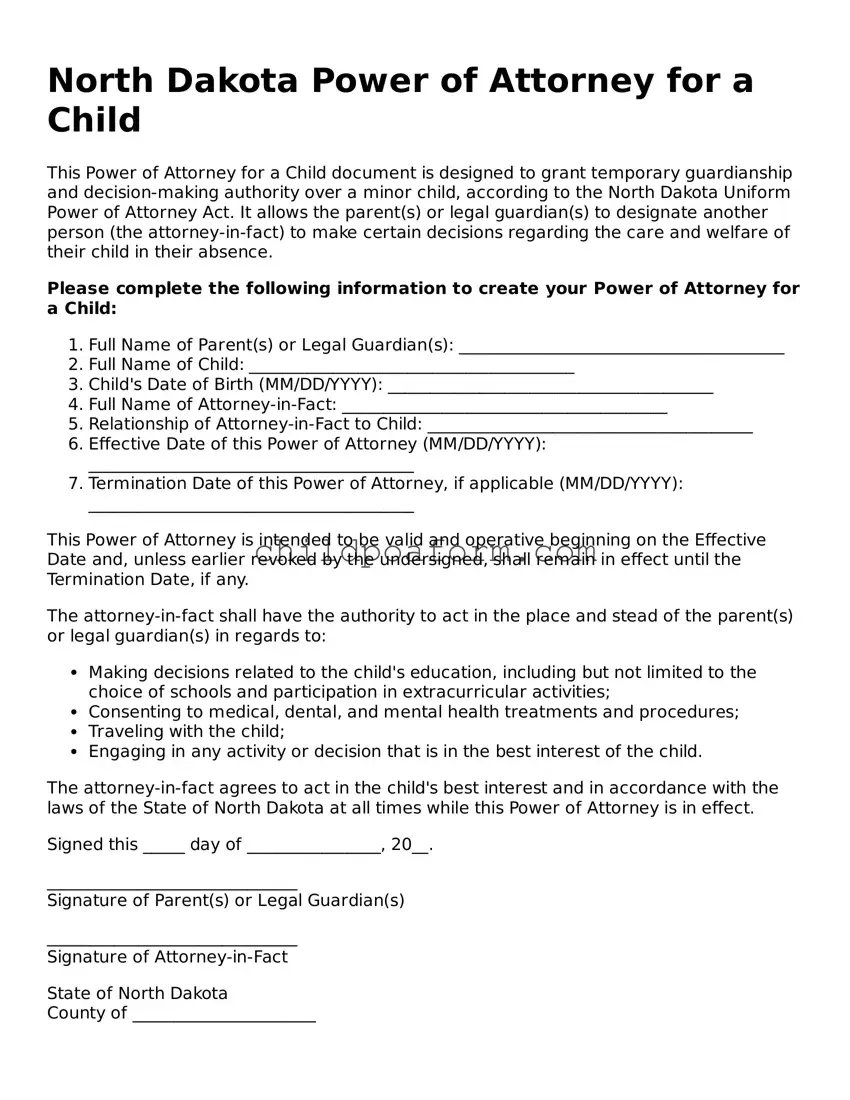Instructions on Utilizing North Dakota Power of Attorney for a Child
When a parent or guardian needs someone else to make decisions on behalf of their child, the North Dakota Power of Attorney for a Child form becomes crucial. This legal document grants an appointed person the authority to act in the parent or guardian's stead, ensuring the child's welfare is consistently prioritized. Filling out this form accurately is essential for its validity and the protection it offers. Here are the necessary steps to complete the form:
- Gather all necessary information, including the child's full name, date of birth, and social security number, as well as the full name and contact details of the person being granted power of attorney (the attorney-in-fact).
- Review the form thoroughly to understand all sections and instructions. If the form is not provided, ensure to obtain it from a reliable source, such as a family law attorney or the official website of the North Dakota state government.
- Enter the parent or guardian's full name and address in the designated section at the beginning of the form. This identifies who is granting the power of attorney.
- Fill in the full name, address, and contact information of the attorney-in-fact in the specified sections. This individual will assume responsibility for the child's care under the power of attorney.
- Clearly specify the powers being granted to the attorney-in-fact. This may include decisions related to the child's education, health care, and other welfare matters. Be as specific as possible to avoid any ambiguity.
- Include any specific terms, conditions, or limitations to the power of attorney. This could involve specifying a duration for the power of attorney or detailing any decisions that the attorney-in-fact is not authorized to make.
- Sign and date the form in the presence of a notary public. The parent or guardian granting the power of attorney must do this step to ensure the form’s legality.
- Have the attorney-in-fact sign the form, if required by the form's instructions or by state law, acknowledging their acceptance of the responsibilities conferred upon them.
- File the completed form with the appropriate local or state office, if necessary. Some jurisdictions may require the form to be filed with a court or government office to be valid.
- Keep a copy of the fully executed form for your records and provide the attorney-in-fact with a copy. It's also wise to inform relevant parties, such as the child's school or healthcare provider, of the arrangement.
Once filled out, the North Dakota Power of Attorney for a Child form empowers an individual to make critical decisions in the best interest of the child, always aiming to ensure their well-being and stability. It's a significant step that demands careful consideration and clear communication between all parties involved.
